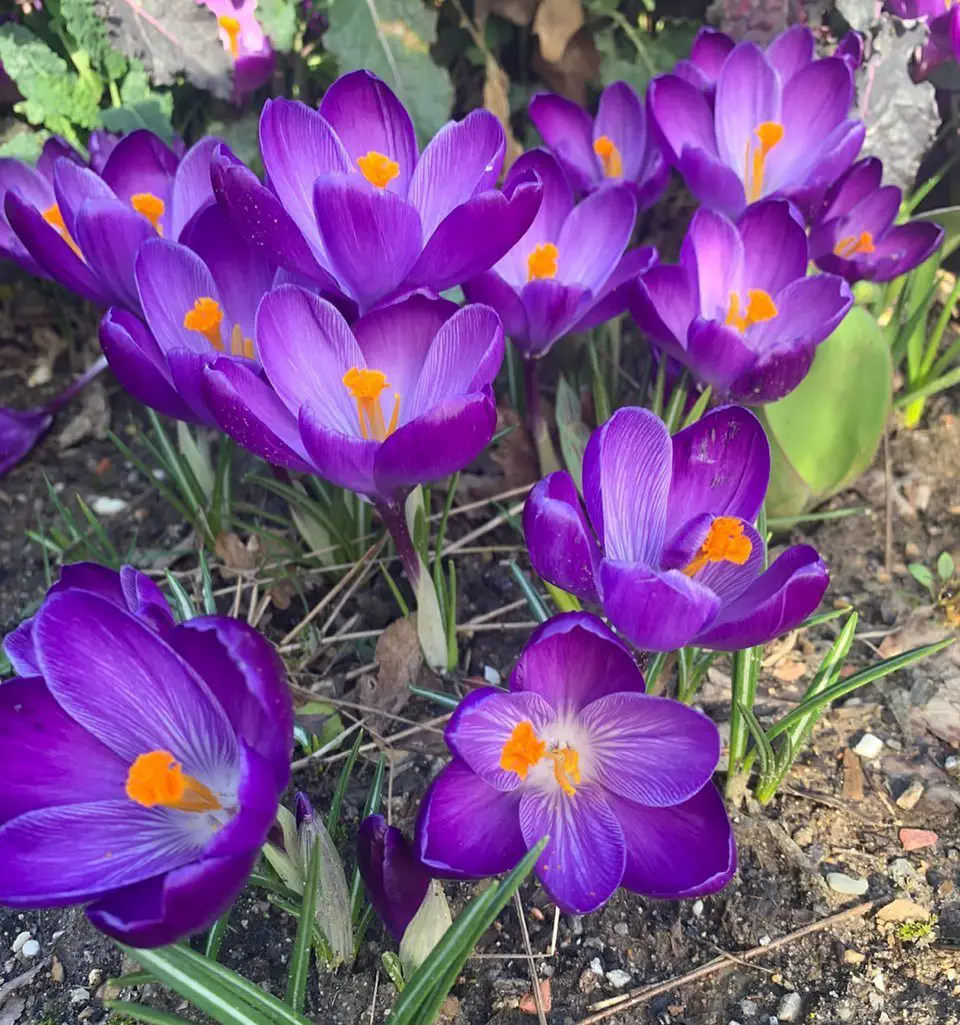Discover the charm of Crocus flowers. Learn about their varieties, care tips and significance as spring harbingers in this comprehensive guide to these colorful, early-blooming bulbs.
Crocus flowers are often the first blooms to appear in late winter or early spring, bringing a welcome burst of color after the long, cold months. These small but mighty flowers are beloved by gardeners across the United States for their cheerful appearance and early blooming time. In this article, we’ll explore everything you need to know about growing and enjoying Crocus flowers.
Here’s an easy and verified chart for Crocus:
| Category | Details |
|---|---|
| Botanical Name | Crocus spp. |
| Common Name | Crocus |
| Plant Type | Bulbous perennial |
| Hardiness Zone | Zones 3-8 (depending on species) |
| Sun Exposure | Full sun to part shade |
| Soil Type | Well-draining, sandy to loamy soil |
| Watering Needs | Average; drought tolerant once established |
| Growth Habit | Low-growing, clump-forming |
| Height/Spread | 3-6 inches tall, spread of 1-2 inches |
| Special Features | Cup-shaped flowers in shades of purple, yellow, white, or striped; blooms in early spring; naturalizes well in lawns and woodland settings; attracts early pollinators |
What are Crocus Flowers?
Crocus are small, cup-shaped flowers that grow from bulb-like structures called corms. They’re known for:
- Early spring or fall blooming (depending on the species)
- A variety of colors including purple, white, yellow and striped varieties
- Low-growing habit, typically 3-6 inches tall
Learn more about Crocus species from the USDA Plants Database.
Common Varieties
There are many Crocus varieties, including:
- Crocus vernus (Dutch Crocus)
- Crocus chrysanthus (Snow Crocus)
- Crocus sativus (Saffron Crocus)
- Crocus tommasinianus (Tommasini’s Crocus)
The National Garden Bureau offers more information on different bulb varieties, including Crocus.
Growing Crocus
Crocus are relatively easy to grow:
- Sunlight: Full sun to partial shade
- Soil: Well-draining soil
- Planting Time: Fall, about 6-8 weeks before the ground freezes
- Hardiness: Most are hardy in USDA zones 3-8
For detailed growing instructions, visit the Clemson Cooperative Extension website.
Planting and Care
To grow healthy Crocus:
- Plant corms 3-4 inches deep and 2-3 inches apart
- Water well after planting and during active growth
- Allow foliage to die back naturally after blooming
- Divide clumps every few years if they become overcrowded
The University of Minnesota Extension provides more tips on planting spring-flowering bulbs like Crocus.
Uses of Crocus
Crocus have various uses in the garden and beyond:
- Early spring color in beds and borders
- Naturalized in lawns
- Grown for saffron production (Crocus sativus)
- Attract early pollinators
Learn about using Crocus in your landscape from the Missouri Botanical Garden.
Crocus in the Garden
Crocus can be versatile additions to your garden:
- Plant in drifts for maximum impact
- Use in rock gardens
- Grow in containers for early spring color
- Naturalize in woodland areas or lawns
For landscaping ideas, check out the Chicago Botanic Garden guide.
Pests and Diseases
While generally hardy, Crocus can face some challenges:
- May be eaten by rodents or deer
- Can be affected by fungal diseases in overly wet conditions
- Susceptible to virus diseases
The University of California Integrated Pest Management offers advice on managing Crocus pests and diseases.
Forcing Crocus Indoors
You can force Crocus to bloom indoors:
- Plant corms in pots with well-draining soil
- Chill for 12-15 weeks
- Bring into a cool, bright location to bloom
Learn more about forcing bulbs from the Iowa State University Extension.
Ecological Benefits
Crocus play a role in supporting early pollinators:
- Provide nectar for bees emerging in early spring
- Help support pollinator populations before other flowers bloom
Discover more about gardening for pollinators at the Xerces Society website.
Fun Facts about Crocus
- The word “Crocus” comes from the Greek word “krokos,” meaning “saffron”
- Saffron, the world’s most expensive spice, comes from the stigmas of Crocus sativus
- Some Crocus species bloom in fall instead of spring
Crocus in American Gardens
Crocus have become popular in American gardens due to:
- Their early blooming time, signaling the end of winter
- Low maintenance requirements
- Ability to naturalize and spread over time
Learn more about incorporating bulbs into your garden from the American Horticultural Society.
Crocus flowers may be small, but they pack a powerful punch in the garden, offering cheerful colors when we need them most. Whether you’re looking to add early spring interest to your landscape, naturalize a lawn area, or simply enjoy some indoor blooms, Crocus are an excellent choice. With their easy care requirements and charming flowers, these little bulbs are sure to bring joy to your garden year after year.
For more information on spring-flowering bulbs, visit the National Gardening Association website.
For more gardening tips and plant care guides, visit usagardenhub.com.


